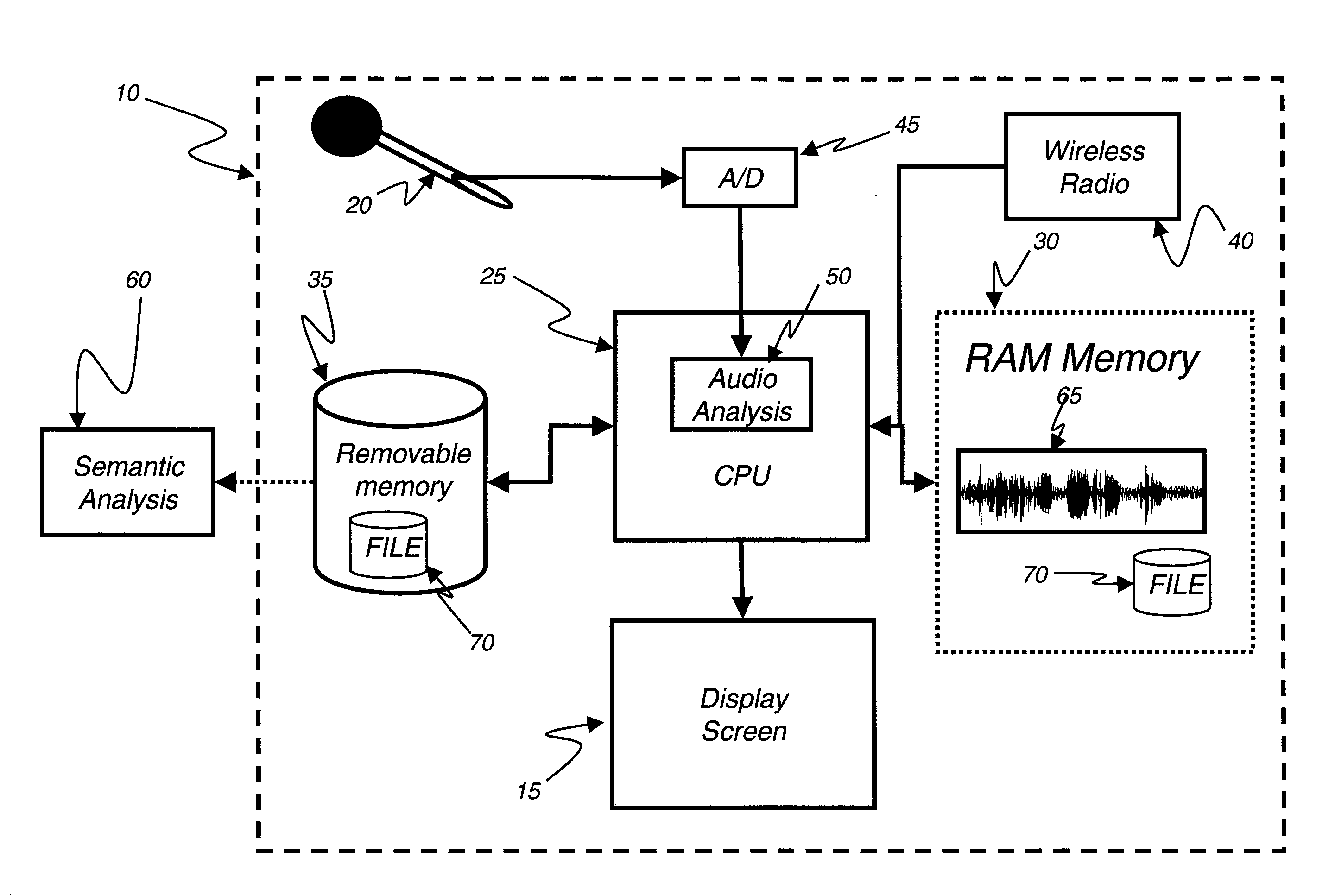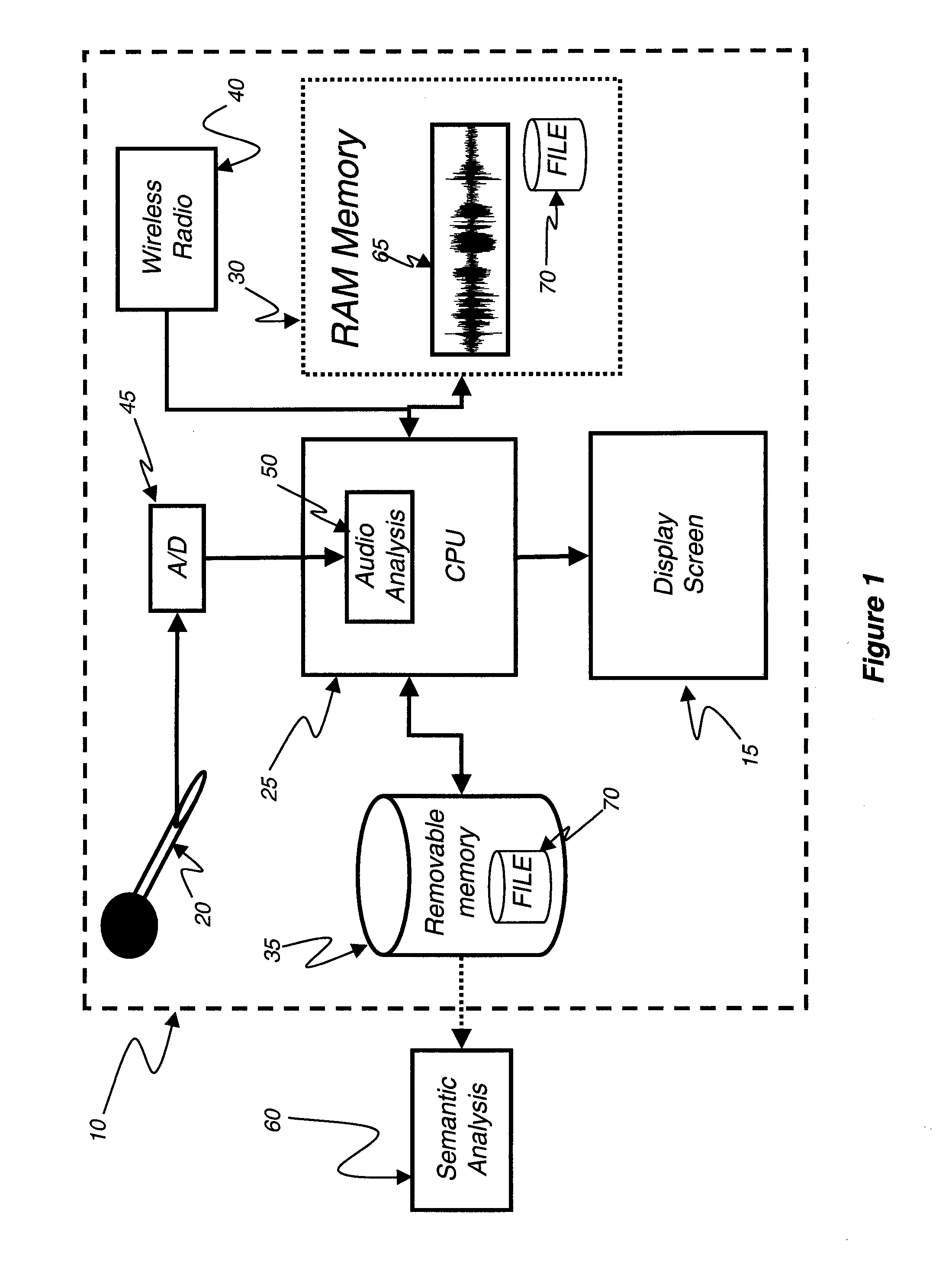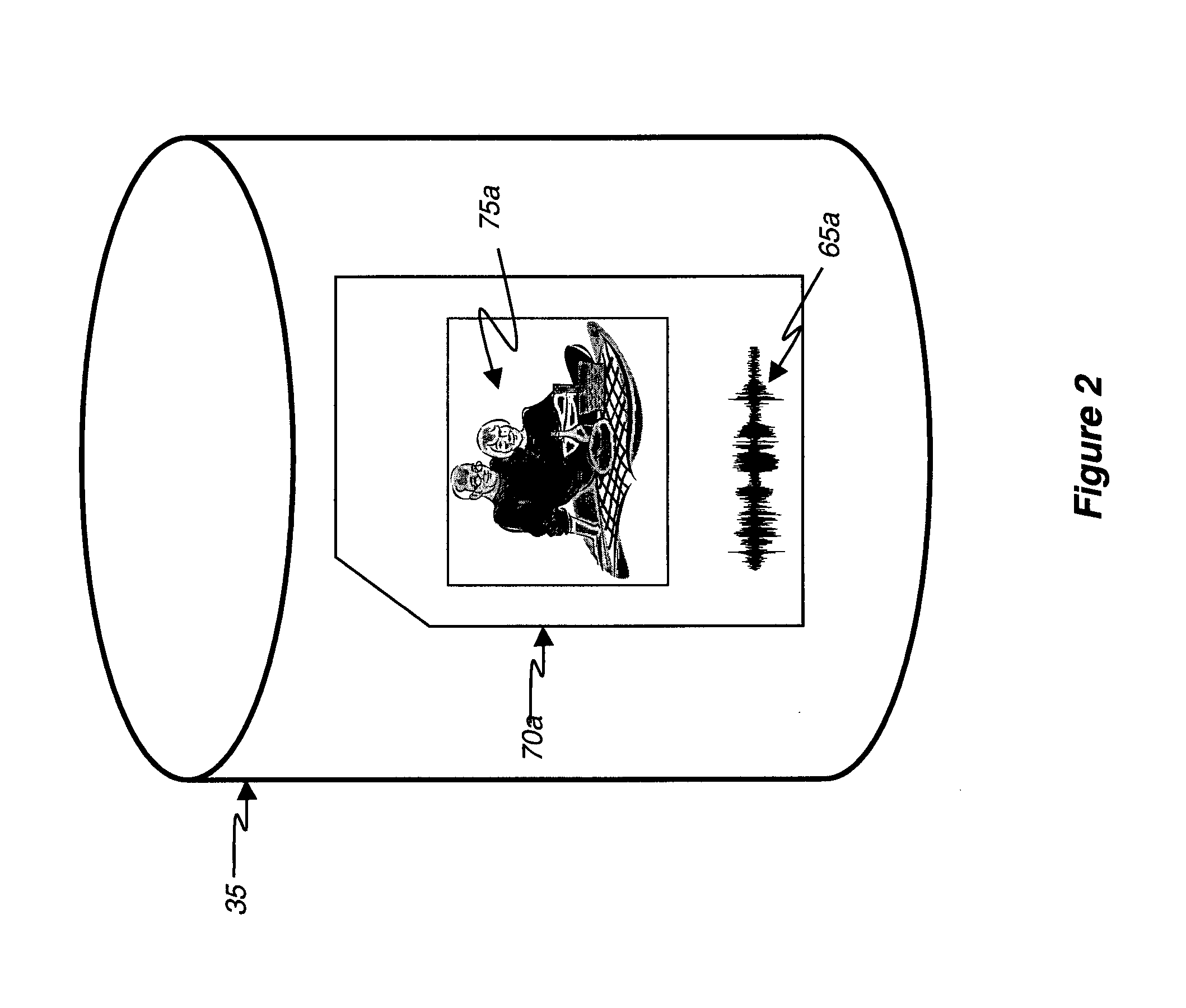Recording audio metadata for stored images
a technology for recording audio and images, applied in the field of audio processing, can solve the problems of significant challenges in the organization, search and retrieval of images of interest, and the comparison of algorithms unfavorable with humans performing these tasks for the foreseeable future, and achieve the effect of improving the semantic understanding of the captured image and enhancing the user viewing experien
- Summary
- Abstract
- Description
- Claims
- Application Information
AI Technical Summary
Benefits of technology
Problems solved by technology
Method used
Image
Examples
Embodiment Construction
[0026]In the following description, the present invention will be described in its preferred embodiment as a digital picture frame device. Those skilled in the art will readily recognize that the equivalent invention can also exist in other embodiments.
[0027]It is understood that the phrases “image”, “captured image”, “image data”, “imagery”, “scene”, and the like as used in this description of the present invention relate to still images as well as moving images, as in a video. The terms “media” and “multimedia” are used interchangeably, and refer to audiovisual data as well as separate audio data, image data and video data as stored in a digitized computer file. When called for, the terms “still image” and “video”, or variations thereof, will be used to describe still or motion imagery display scenarios that are distinct.
[0028]Referring to FIG. 1, a display device 10 capable of displaying still or video imagery is shown. The display device 10 includes a display screen 15 and at le...
PUM
 Login to View More
Login to View More Abstract
Description
Claims
Application Information
 Login to View More
Login to View More - R&D
- Intellectual Property
- Life Sciences
- Materials
- Tech Scout
- Unparalleled Data Quality
- Higher Quality Content
- 60% Fewer Hallucinations
Browse by: Latest US Patents, China's latest patents, Technical Efficacy Thesaurus, Application Domain, Technology Topic, Popular Technical Reports.
© 2025 PatSnap. All rights reserved.Legal|Privacy policy|Modern Slavery Act Transparency Statement|Sitemap|About US| Contact US: help@patsnap.com



